
Overview of Quantum Technology Research
Quantum technologies, including quantum computing, quantum communication, and quantum sensing, have been attracting researchers and engineers. Notably, there has been an exponential increase in investments in quantum sciences and technologies worldwide. This remarkable growth has been driven by increased government and public funding, signifying an exciting era of innovation during this second quantum revolution. An increasing number of startups and major technology companies are actively engaged in the development of quantum technologies.
To establish such quantum ecosystem in Korea, we launched the Center for K+QuIST (Center for K+Quantum Information Science and Technology) in May 2023 with support from the ministry of Science and ICT of Korea. The center with the KAIST as a leading institution includes eight other participating national universities (CBNU, CNU, JBNU, JNU, HBNU, KNU, PKNU, PNU). The mission of the center for K+QuIST is to foster our students to become a global leader in the fields of quantum sciences and technologies (QST) by exploring the frontier of QST flagship research, developing effective methodologies in teaching QST, and providing a real-world QST research opportunities.
The center establishes a KAIST-consortium that consists of the Universities in the center, four government-funded research institutes (ETRI, KIST, KISTI, KRISS), and 10 industrial companies to facilitate the development of a quantum ecosystem. Through the project-based research and close cooperation between the participating institution, we expect that our graduate students will acquire expertise in quantum flagship research and identify real-world quantum applications. The graduate students educated in the center would play a central role to construct a quantum ecosystem
Professors and Laboratories
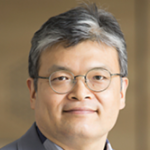
Department of Physics / professor Eunseong Kim
Superconducting qubit quantum computing.
김은성 교수님 < Center for Supersolid and Quantum Matter Research >
Homepage ≫ http://sqnl.kaist.ac.kr/
Overall research theme : Our research group is focused on studying macroscopic quantum-mechanical phenomena in both natural and artificial systems.
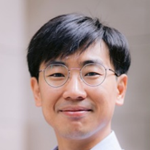
Department of Physics / professor Donggyu Kim
Rydberg atom based quantum simulator and NV center based quantum sensing.
김동규 교수님 < Opto-Quantumics (OQT) Lab>
Homepage ≫ https://oqt.kaist.ac.kr/
Overall research theme : Our research studies the interface of atomic qubits and coherent optical imaging. We are particularly interested in the fundamental roles and limits of the interface of optical coherent imaging and quantum coherence existing in atomic qubit arrays.
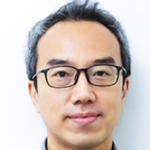 Department of Physics / Professor Sekwon Kim
Department of Physics / Professor Sekwon Kim
Quantum magnon hybrid systems.
김세권 교수님 < Quantum Spin Dynamics Laboratory > >
Homepage ≫ https://sites.google.com/site/sekwonkimphysics/
Overall research theme : We study fundamental physics of magnetism and superconductivity as well as their technological applications in practical fields such as spintronics and neuromorphic computing. Many of our research involve topological phenomena including the dynamics of topological solitons and the identification of novel topological phases.
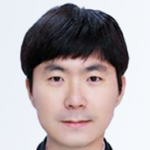 Department of Physics / professor Young-Sik Ra
Department of Physics / professor Young-Sik Ra
Squeezed vacuum based quantum sensing.
라영식 교수님 < Quantum Optics and Quantum Information Lab>
Homepage ≫ http://qoqi.kaist.ac.kr/
Overall research theme : We study large-scale entangled states of quantum light and use them to develop scalable quantum technologies.
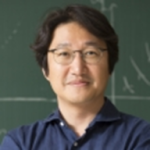 Department of Physics / professor Eun-Gook Moon
Department of Physics / professor Eun-Gook Moon
Quantum phase transition and quantum materials.
문은국 교수님
Homepage ≫ https://sites.google.com/view/egmoon
Overall research theme :
Main research topic is quantum many-body systems with high entanglement and correlations. Conventional many-body systems may be characterized by the Landau paradigms: 1) quasi-particle description of electron/spin excitations, 2) conventional symmetry breaking phase transitions. On the contrary, the paradigms do not work in quantum many-body systems with high entanglement and correlation. The prime examples include quantum spin liquids, high-temperature superconductivity, and non-Fermi liquids.
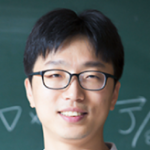 Department of Physics / Professor Min-Kyo Seo
Department of Physics / Professor Min-Kyo Seo
Quantum photonic integrated circuits and quantum transducers.
서민교 교수님 < Sub-Wavelength Optics Lab >
Homepage ≫ http://swol.kaist.ac.kr/
Overall research theme :
Our research group aims to understand resonant light-matter (photon-electron, photon-phonon, photon-spin, photon-exciton, and so on) interactions based on optical nanostructures, boost the efficiency and quantum yield in various nano-photonic phenomena, and engineer their properties for future applications. We aim to develop precise and quantitative measurement methods for physical understanding of nano-optical phenomena from the evanescent near-field to the radiating near-field (Fresnel) and the far-field (Fraunhofer) regime. We aim to challenge the goal, single-photon nonlinearity, where single individual photons can interact with each other and behave like Fermions, under the blessing of the ultimate high-Q/V optical resonator.
 Department of Physics / professor Heung-Sun Sim
Department of Physics / professor Heung-Sun Sim
Quantum electron devices.
심흥선 교수님 < Quantum Electron Correlation & Transport Theory Group >
Homepage ≫ https://qet.kaist.ac.kr/
Overall research theme : we are theoretical physicists who study exciting quantum phenomena in condensed matter systems, employing diverse analytical and numerical techniques.
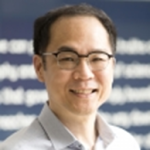 Department of Physics / professor Jaewook Ahn
Department of Physics / professor Jaewook Ahn
Neutral atom based quantum simulator.
안재욱 교수님 < Quantum Computing Lab >
Homepage ≫ http://qcl.kaist.ac.kr/
Overall research theme : Our research has been focused on Rydberg-atom quantum computation: Rydberg atoms, having a high principal quantum number, are huge in size (typically a few micrometers), a few thousand times bigger than the “usual” atoms in the near-ground state; hence, these atoms can be strongly coupled to each other (entangled), even when they are a few micrometers apart (being optically observable and thus controllable).
We devised X- and Z-rotation fine-structure state operations, clock-state X-rotation, and single-pulse Ramsey measurements, all in the femtosecond time scales. Since the intensity fluctuation is one of the crucial issues in the ultrafast quantum gates, we explore the ways how to deal with the intensity-related infidelity: for example, programmed laser pulses or utilization of ancila states.
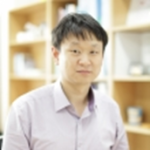 Department of Physics / professor Heejun Yang
Department of Physics / professor Heejun Yang
Quantum sensor and low-dimensional quantum materials.
양희준 교수님 < Quantum Energy Device Lab >
Homepage ≫ https://qedlab.kaist.ac.kr/
Overall research theme : We invented ‘Graphene Barristor’, a new interface and Schottky barrier-controlling device. We reported how to use ‘Polymorphism of 2D materials’ for novel energy-efficient devices. We discovered ‘phonon puddles’ that determine atomic-scale thermoelectric features.
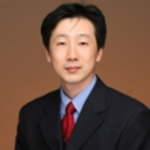 Department of Physics / professor Kyung-Jin Lee
Department of Physics / professor Kyung-Jin Lee
Magnon entanglement and quantum computing applications.
이경진 교수님 <Applied Spintronics Lab >
Homepage ≫ https://sites.google.com/site/kyungjinlee1/
Overall research theme : We are working on various spin-related phenomena and spintronic devices.
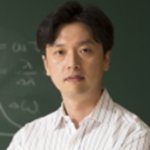 Department of Physics / professor Hansuek Lee
Department of Physics / professor Hansuek Lee
Quantum optical integrated circuits and quantum interfaces.
이한석 교수님 < Nanophotonic Systems Laboratory >
Homepage ≫ https://www.hleelab.org/
Overall research theme : Our group focuses on the design and development of novel photonic devices of extraordinary functionality by controlling optical, mechanical and electrical property of the device based on nanophotonics, nano-fabrication technology, and material science. Especially with ultra-high-Q micro/ nano-cavities, the key element to manipulate photons and their interaction with matter, our aim is to develop essential photonic devices on a monolithic chip having proper interfaces as a core part of next generation photonic systems such as time & frequency precision, high capacity optical telecommunications, and quantum & photon computations.
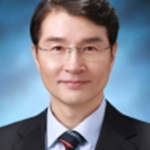 Department of Physics / professor Yong-Hoon Cho
Department of Physics / professor Yong-Hoon Cho
Deterministic quantum light source and integrated quantum photonic system
조용훈 교수님 < Quantum and Nanoscale Photonics >
Homepage ≫ http://qnp.kaist.ac.kr
Overall research theme : Our research interests are understanding and controlling the interaction between light and matter in semiconductor nanophotonic structures. Based on quantum photonics with low-dimensional semiconductors, which combines advanced semiconductor materials and nanophotonic structures, we are focusing on research and development in (i) deterministic quantum light sources and integrated quantum photonics, (ii) exciton-polariton-based devices and non-Hermitian systems, and (iii) ultra-high-resolution optical imaging and control technology.
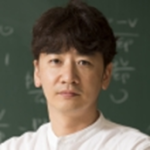 Department of Physics / professor Sungjae Cho
Department of Physics / professor Sungjae Cho
2D material quantum transport and quantum physics.
조성재 교수님 < QUANTUM TRANSPORT LAB/>
Homepage ≫ http://qtak.kaist.ac.kr/
Overall research theme : We explore electronic, spintronic and thermoelectric properties of nanostructured materials such as graphene, topological insulators and transition metal dichalcogenides.
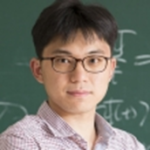 Department of Physics / professor Jae-yoon Choi
Department of Physics / professor Jae-yoon Choi
Quantum gas based quantum simulator.
최재윤 교수님 < JY Lab >
Homepage ≫ http://jylab.kaist.ac.kr/
Overall research theme : We are an experimental atomic physics group and try to find new state of quantum matter. By cooling down the atomic vapor to the nano-Kelvin regime, the ultra-cold atoms can display many-body quantum phenomena such as superconductivity and quantum magnetism. The system can tune various physical parameters like dimensions, impurity, and interaction strength in a wide range of parameter space. A high-resolution imaging technique in optical lattices can address a many-body quantum state in a single atom level, simulating difficult many-body quantum problems in a wide range of physics from condensed matter physics, non-equilibrium statistical mechanics, quantum information science and high energy physics.
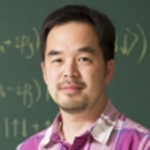 Department of Physics / professor Hyoungsoon Choi
Department of Physics / professor Hyoungsoon Choi
Ultra low temperature quantum fluids and majonara fermion.
최형순 교수님 < CULTURE Lab >
Homepage ≫ http://absoluteze.ro/
Overall research theme : We are currently developing an experimental technique to measure this edge current directly, and are probing other interesting properties of superfluid and normal liquid 3He. We are marching down the avenue by trying to control and manipulate quantized vortices in exciton-polariton quantum fluid. We are interested in the interplay between quantum dots and other 2DEG features, such as the quantum Hall Effect, and their manifestations in the scope of Kondo physics.
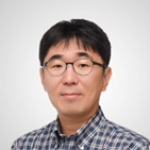 Department of Electrical Engineering / professor Sangsik Kim
Department of Electrical Engineering / professor Sangsik Kim
Quantum sensor and integrated photonics for quantum computer.
김상식 교수님 < Integrated Metaphotonics Group >
Homepage ≫ https://kimgroup.kaist.ac.kr/
Overall research theme : We explore both fundamental and technical aspects of photonics, aiming to bridge the gap between fundamental science and future technology. Our research primarily focuses on integrated nanophotonics, which develops chip-scale photonics integrated circuits (PICs), miniaturizing complicated and bulky table-top optical systems tiny and portable for various field applications. The followings are research topics that we have recently worked on. Each area is strongly correlated, and we always look forward to extending our expertise into other areas to impact the world.
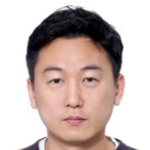 Department of Electrical Engineering / professor Joonwoo Bae
Department of Electrical Engineering / professor Joonwoo Bae
Quantum information theory.
배준우 교수님 < Quantum Information Theory Lab >
Homepage ≫ https://sites.google.com/view/qitkaist
Overall research theme : We’re working on fundamental problems in quantum information theory to understand the information processing in the most fundamental level and to break the limits in today’s technologies
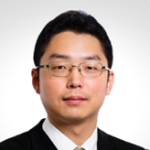 Department of Electrical Engineering / professor Young-Ik Sohn
Department of Electrical Engineering / professor Young-Ik Sohn
Photon based quantum computing and SiV center based quantum repeater.
손영익 교수님 < Quantum Device Lab >
Homepage ≫ https://qdlab.kaist.ac.kr/
Overall research theme : Our research group is devoted to developing novel devices for quantum computing and communications. To build reliable quantum devices, we apply various device technologies to control waves and quantum bits (qubits). We engineer phonons and photons as well as on-chip quantum bits such as electron spin and single photons. Implementation of such functionality requires interdisciplinary approach, where the knowledge of traditional device technologies such as micro-electromechanical systems (MEMS), integrated photonics and quantum physics are uniquely combined.
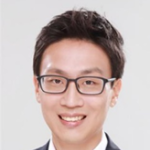 Department of Electrical Engineering / professor Kyoungsik Yu
Department of Electrical Engineering / professor Kyoungsik Yu
On-chip photonic integrated circuit based quantum information device.
유경식 교수님 < Integrated Nanophotonics Lab >
Homepage ≫ https://kaist-yu.notion.site/
Overall research theme : Our research group is working on micro/nano-scale photonics and optoelectronics for advanced information processing, communications, and sensing. All the way from high-speed data center networks down to subwavelength-scale nanophotonic devices, we cover a broad range of optoelectronic devices and circuits with a special emphasis on photonic integrated circuits and their heterogeneous integration.
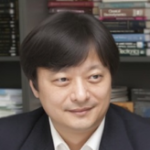 Department of Electrical Engineering / professor June-Koo Rhee
Department of Electrical Engineering / professor June-Koo Rhee
Quantum algorithm theory and application, quantum software.
이준구 교수님 < Quantum Information and Communication Lab >
Homepage ≫ https://www.quic.kaist.ac.kr/
Overall research theme : Our research focus is fused from two areas of study: quantum information and optical communications. Current efforts in quantum information include Continuous Variable Quantum Key Distribution (CV QKD), Quantum Machine Learning, and Optical Transmissions.
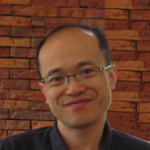 Department of Chemistry / professor Young Min Rhee
Department of Chemistry / professor Young Min Rhee
Quamtum computer hybrid computing method for macromolecular compunds application.
이영민 교수님 < Computational Photodynamics Research Lab >
Homepage ≫ http://singlet.kaist.ac.kr/index.html
Overall research theme : we have been examining the detailed dynamics within photosynthetic complexes. Our major point of view is to include all atomistic details in the examination. For this, we have been treating a series of prototypical systems such as the famous Fenna-Matthews-Olson (FMO) complex. Treating the transfer dynamics with all-atom details actually requires different techniques than conventional classical mechanics based approaches (which are often called “MD” approaches). Thus, we apply nonadiabatic semiclassical techniques, and we are heavily developing practical and reliable schemes that can be newly applied for relevant systems.
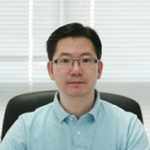 Department of Electrical Engineering / professor Jeongseok Ha
Department of Electrical Engineering / professor Jeongseok Ha
Quantum cryptography and machine learning based error correction code.
하정석 교수님 < Coding and Communications Lab >
Homepage ≫ http://cocoa.kaist.ac.kr/
Overall research theme : The research interests of the CoCoA include the general area of communication systems, coding theory, and physical layer security. CoCoA has on-going projects in signal processing and error-control system design for storage devices, information theoretic security and theories/practice of advanced error-control codes such as LDPC codes, Turbo codes and Polar codes.

